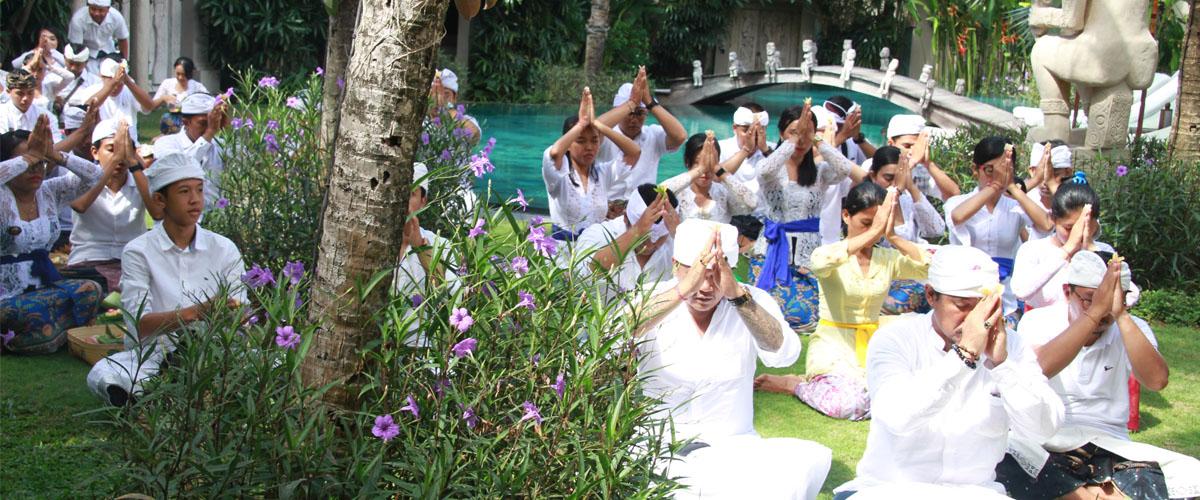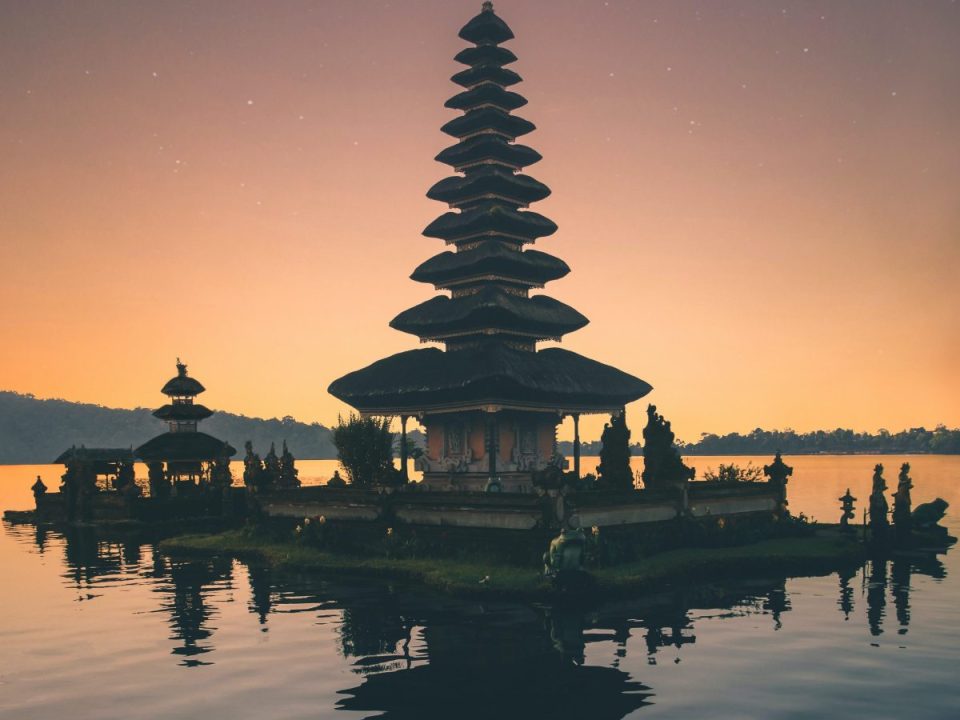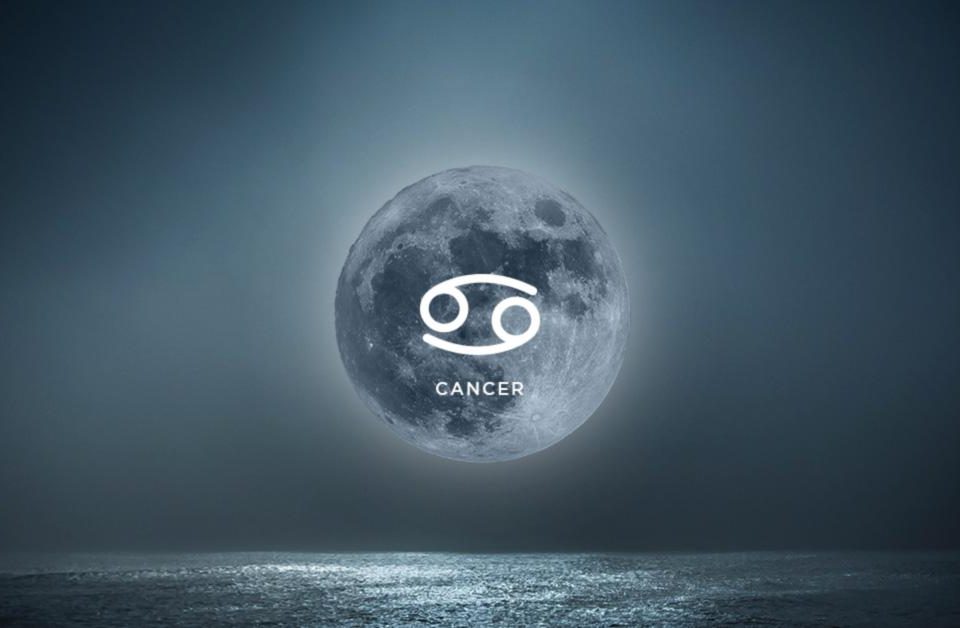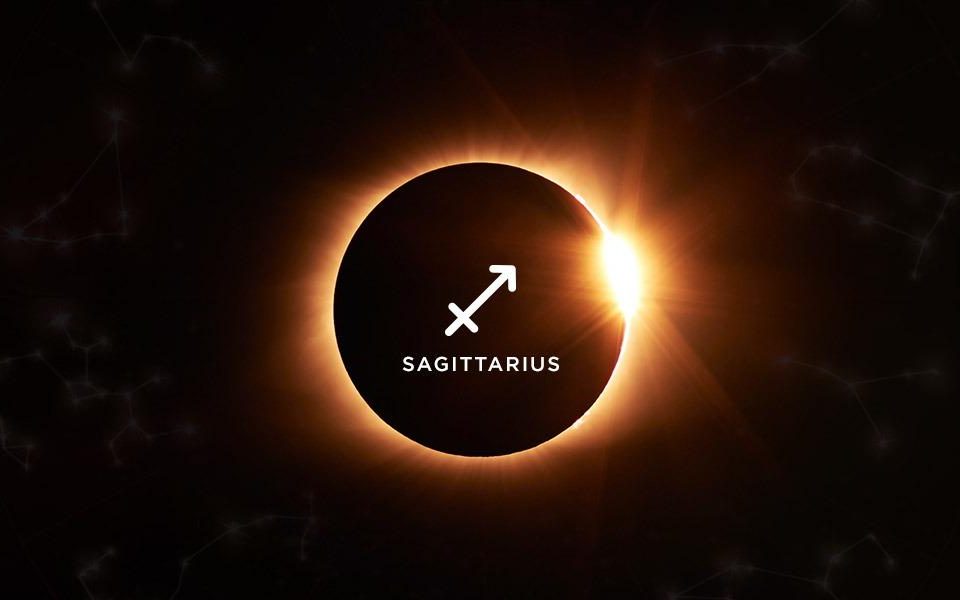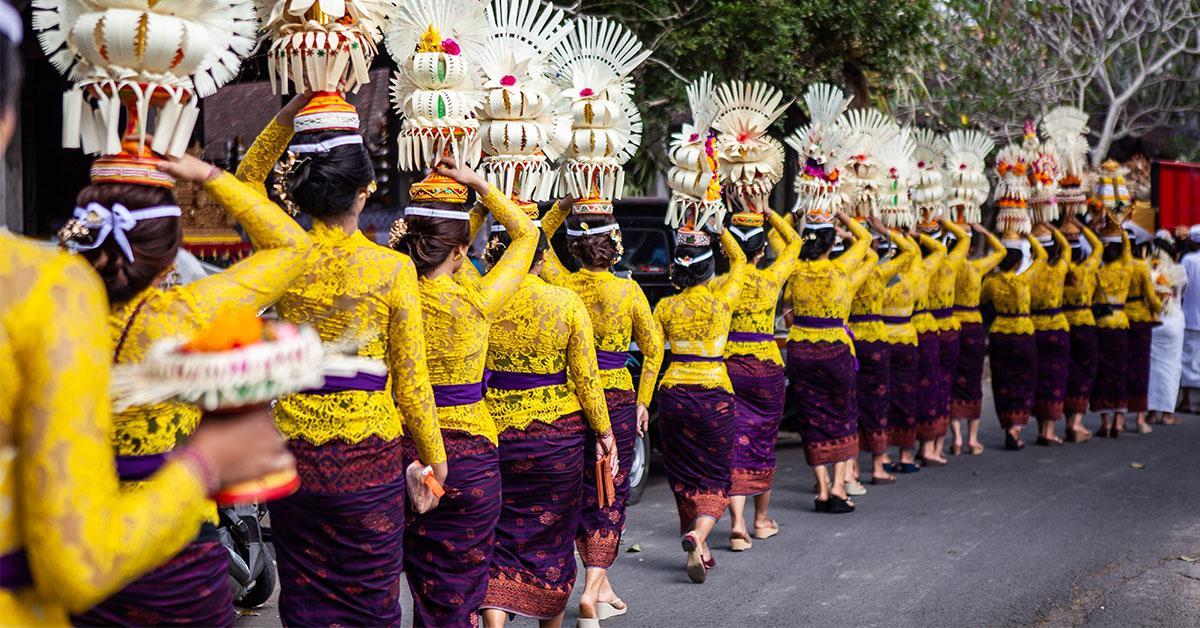
Galungan & Kuningan Holidays
Galungan is a Balinese holiday celebrating the victory of dharma (Good spirit) over adharma (bad spirit). It marks the time when the ancestral spirits visit the Earth. The last day of the celebration is Kuningan, when they return. The date is calculated according to the 210-day Balinese calendar.
Galungan day
Throughout the day the local temples are crowded with people coming and going, bringing the offerings and praying.
Occurring once in every 210 days based on Balinese cycle of days, Galungan marks the beginning of the most important recurring religious ceremony that is celebrated by all Balinese.
Although Galungan falls on a Wednesday, most Balinese will begin their Galungan 'holiday' the day before, where the family is seen to be busily preparing offerings and cooking for the next day. While the women of the household have been busy for days before creating beautifully woven 'banten' (offerings made from young coconut fronds)
On Wednesday, the day of Galungan, one will find that most Balinese will try to return to their own ancestral home at some stage during the day, even if they work in another part of the island. This is a very special day for families, where offerings are made to God and to the family ancestors who have come back to rest at this time in their family temple. As well as the family temple, visits are made to the village temple with offerings as well, and to the homes of other families who may have helped the family in some way over the past six months.
The day after Galungan is a time for a holiday, visiting friends, maybe taking the opportunity to head for the mountains or beach for a picnic and recreation, having quality time with family.
Kuningan day
The Balinese believe that Kuningan day is the day when their ancestors return to heaven after visiting the earth during Galungan celebration. They make offerings to be given to the ancestors on their farewell day. The offerings include yellowed rice (Kuningan is derived from the word kuning which means yellow) which is placed in a small "bowl" made of coconut leaves. Other common offerings a seeds, fish and fruit like papaya and cucumber. The yellow rice is the symbol of human's gratitude towards God for all the life, joy, wealth, health and prosperity given. The bowls are decorated with a small figures of shadow puppets which represents angels that bring joy and wealth to earth.
It is also said that on Kuningan day Ida Sang Hyang Widhi (God) is blessing and giving prosperity to the whole world. Many people believe that the celebration should be done before noon, before gods and goddess' return to the heavens to continue their asceticism.
On Kuningan day you can see tamiang and endongan decorations made from janur hanging outside homes and temples.
Tamiang means - and is formed as a round - shield and represents protection, defense, and the cycle of the globe. It functions as a reminder to humans of karma and that they should protect themselves from bad behavior.
Endongan means bag of provisions. It is made of coconut leaves and shaped like a bag or a pocket. The Balinese put different things like seeds, fruits, tuber inside the endongan. Some people see it is a symbol of food supply for the journey of the ancestors from earth to heaven. From a spiritual view, endongan represents the essential provisions that every human should carry-knowledge and homage.
In some villages, especially in Gianyar region, Barong or ngelawangs - lion like creatures - are going from house to house followed by kids playing traditional Balinese music instruments.
If a barong arrives in front of your house, you should give an offering called canang with sesari (money) on it, after receiving the offering; the barong will dance and bless your house and your family.


